Tanzania budget safari & Tours
Tanzania Budget Safaris: Affordable Adventures
Tanzania is a wildlife enthusiast’s paradise, with its diverse landscapes, abundant wildlife, and fascinating cultural heritage. A budget safari in Tanzania offers an affordable way to experience the beauty of this East African country without breaking the bank. From the iconic Serengeti National Park to the majestic Mount Kilimanjaro, Tanzania has something to offer every traveler.
Tanzania budget safaris can cost anywhere from $200 to $300 per person per day. This usually includes accommodation, transportation, park entrance fees, and the services of a guide.
For those looking to explore beyond the traditional safari experience, Tanzania offers a wide range of activities with varying costs:
- Hiking Mt. Kilimanjaro: Embark on an unforgettable adventure with prices ranging from $1,800 to $2,500, covering guides, permits, and meals.
- Hot Air Ballooning in the Serengeti: Soar above the stunning landscapes for around $550, an experience that promises breathtaking views of wildlife and the savannah.
- Guided Safari Drives: Full-day excursions cost between $200 and $300, allowing you to witness the iconic Big Five in their natural habitat.
- Cultural Maasai Village Tours: Engage with the local culture for $50 to $100, offering an insightful glimpse into traditional Maasai life.
- Scuba Diving: Dive into the crystal-clear waters for $85, exploring vibrant marine life and coral reefs.
- Sunset Cruises: Relax on a serene cruise for $35 to $40 per person, absorbing the stunning Tanzanian sunset.
In addition to safaris, there are several affordable ways to navigate the vibrant cities and stunning landscapes of Tanzania:
- Dala dalas: These minibuses are a staple of urban transport, crisscrossing the cities and reaching almost every corner. At around US$1 for an hour’s trip, they offer an economical way to travel, albeit often in a packed setting.
- Boda bodas: For a quick and thrilling ride, hop on a motorcycle taxi. These are perfect for dodging traffic and are quite affordable, making them an exciting choice for the adventurous traveler.
- Ferry Services: If your journey takes you to Zanzibar, consider the ferry from Dar Es Salaam, priced at US$35 for non-residents. It’s a scenic and cost-effective route compared to flights, which range from US$40 to US$80.
- Coaches: For longer trips across the country, coaches provide a comfortable and reasonably priced option, with a 12-hour journey costing about US$16. As an added benefit, a new train network is in the works, promising more affordable travel options in the near future.
Whether you’re exploring the wild on a safari or navigating the bustling streets, Tanzania offers numerous budget-friendly travel solutions to enhance your adventure.
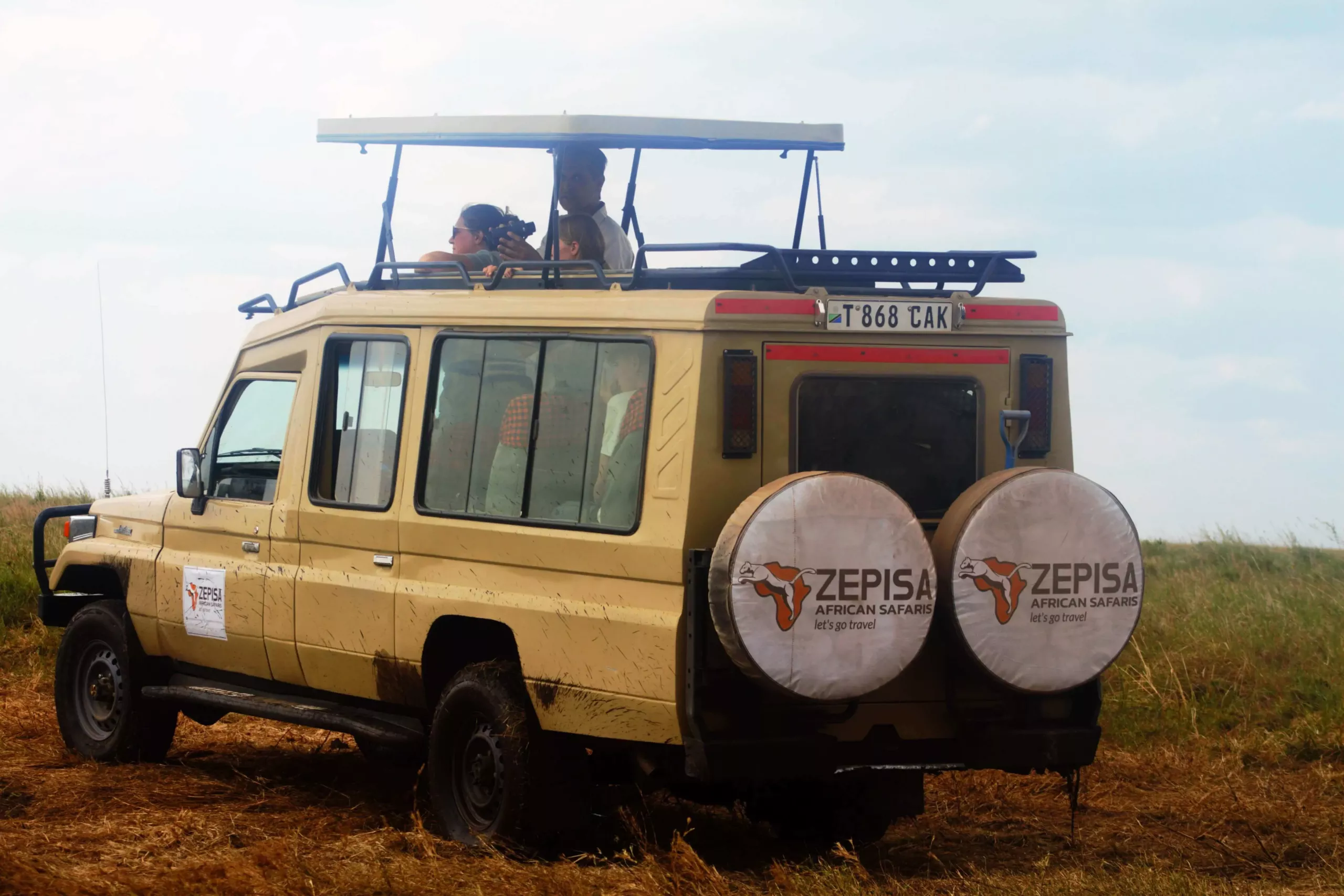
Why choose Tanzania Budget Safaris?
Affordable Pricing: One of the main benefits of choosing a budget safari in Tanzania is affordability. Budget safaris are designed to provide a cost-effective way to explore the country’s natural wonders without skimping on the experience. By choosing budget-friendly accommodations, transportation, and activities, travelers can enjoy an unforgettable safari experience at a fraction of the cost of luxury safaris.
To understand how to maximize your budget, it’s important to know what drives the cost of a safari in Tanzania:
- National Park Entrance Fees: These fees vary depending on the park you visit, with iconic locations like the Serengeti and Ngorongoro Crater typically commanding higher fees.
- Type of Safari: The choice between private and group safaris, or self-drive versus guided tours, can significantly impact costs. Group safaris and self-drive options are generally more budget-friendly.
- Seasonality: Traveling during the off-peak season can lead to reduced prices on everything from park fees to accommodations, making it an excellent strategy for budget-conscious travelers.
- Accommodation: Opting for budget lodges or campsites instead of luxury lodges can substantially lower your expenses without compromising the essence of the safari experience.
Authentic Wildlife Encounters: Despite the lower cost, budget safaris in Tanzania offer the same incredible wildlife viewing opportunities as more expensive options. From the iconic Big Five (lion, elephant, buffalo, leopard, rhinoceros) to cheetahs, giraffes, zebras, and wildebeests, Tanzania’s national parks are home to a diverse array of wildlife species. A budget safari allows travelers to embark on guided game drives, nature walks, and cultural excursions to witness these animals up close in their natural habitat.
Experienced Guides: We employ knowledgeable and experienced guides who are passionate about wildlife conservation and eager to share their expertise with visitors. These guides are familiar with the best times and locations to spot wildlife, ensuring that travelers have an enriching safari experience. They also provide valuable insights into Tanzania’s culture, history, and ecosystem, adding depth to the safari experience.
Flexible Itineraries: Budget safaris often offer flexible itineraries that can be tailored to suit the preferences and interests of individual travelers. Whether you’re interested in bird watching, photography, hiking, or cultural experiences, there are budget safari options that cater to a variety of interests. You can choose from a range of safari packages, from short day trips to extended multi-day tours, allowing them to create a personalized itinerary that fits your budget and schedule
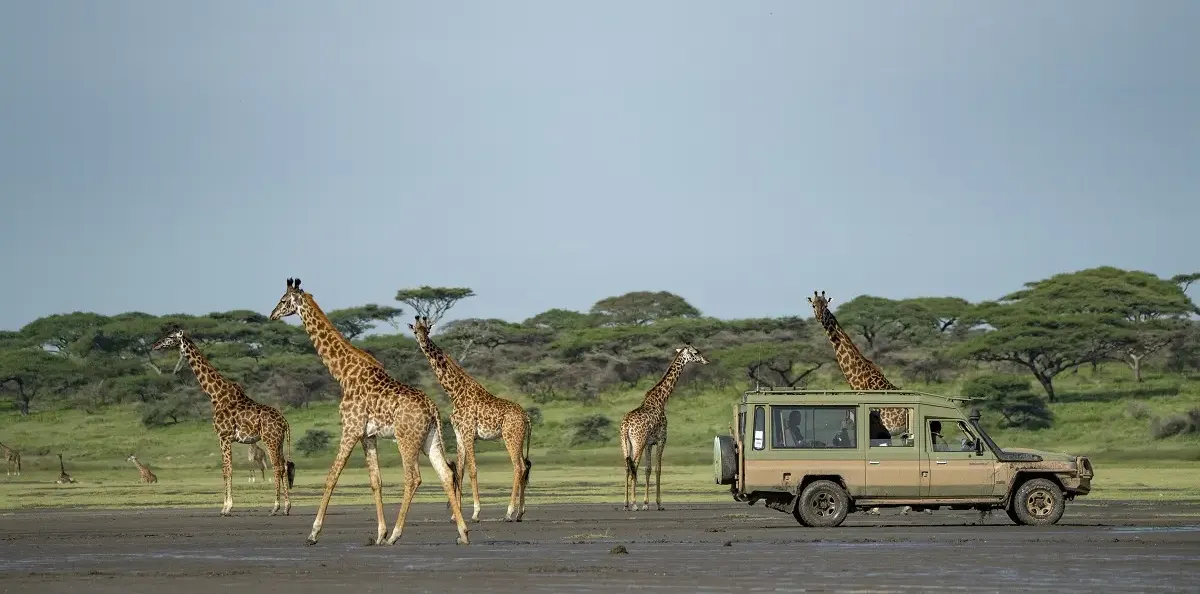
How Can I Cut Costs by Choosing a Camping Safari?
Embarking on a Tanzanian safari doesn’t have to drain your wallet. By opting for a camping safari, you can significantly reduce your accommodation expenses while experiencing the raw beauty of nature. Let’s explore how camping can be a budget-friendly way to enjoy your adventure.
How Much Do Different Campsites Cost in Tanzania?
- Public Park Campsites: Managed by the Tanzania National Parks Authority (TANAPA), these sites charge around $35 per person per night. They’re perfect for those on self-drive safaris, as there’s generally no need for advance booking. Upon park entry, you’ll be assigned a spot.
- Special Campsites: If you’re seeking exclusivity, special campsites are available ranging from $59 per person per night. Typically more secluded, these sites deliver a genuine wilderness experience. Many are pre-booked by private tour operators, but you can attempt to book one by visiting offices in significant hubs like Arusha.
- Campsites Outside National Parks: These are budget-friendly options, with prices between $5 and $15 per tent. Ideal for travelers wanting cost-effective accommodation without the park premium, these spots are still close enough to offer access to incredible landscapes and wildlife.
Comparing Accommodation Costs
- Dorms and Hostels: Staying in a dormitory-style hostel can vary greatly, generally ranging from $10 to $20 per person per night. However, be cautious; prices in certain tourist hotspots like Zanzibar can soar to $50 or more per night for a dorm bed.
- Hotels: For those looking at convenience and comfort, hotel rooms are considerably more expensive. A standard double room usually starts at $50 to $150 per person per night, with more luxurious options climbing to between $150 and $250.
Maximizing Value with Camping
Choosing camping over hotels and hostels allows you to allocate more of your budget towards other experiences, such as guided tours and wildlife activities. This budget-conscious decision not only saves money but also enriches your Tanzanian adventure by keeping you closer to the wilderness.
Camping safaris are the ideal choice for travelers looking to explore Tanzania without breaking the bank. Embrace the simplicity and adventure of the great outdoors—you’ll cut costs while making unforgettable memories.
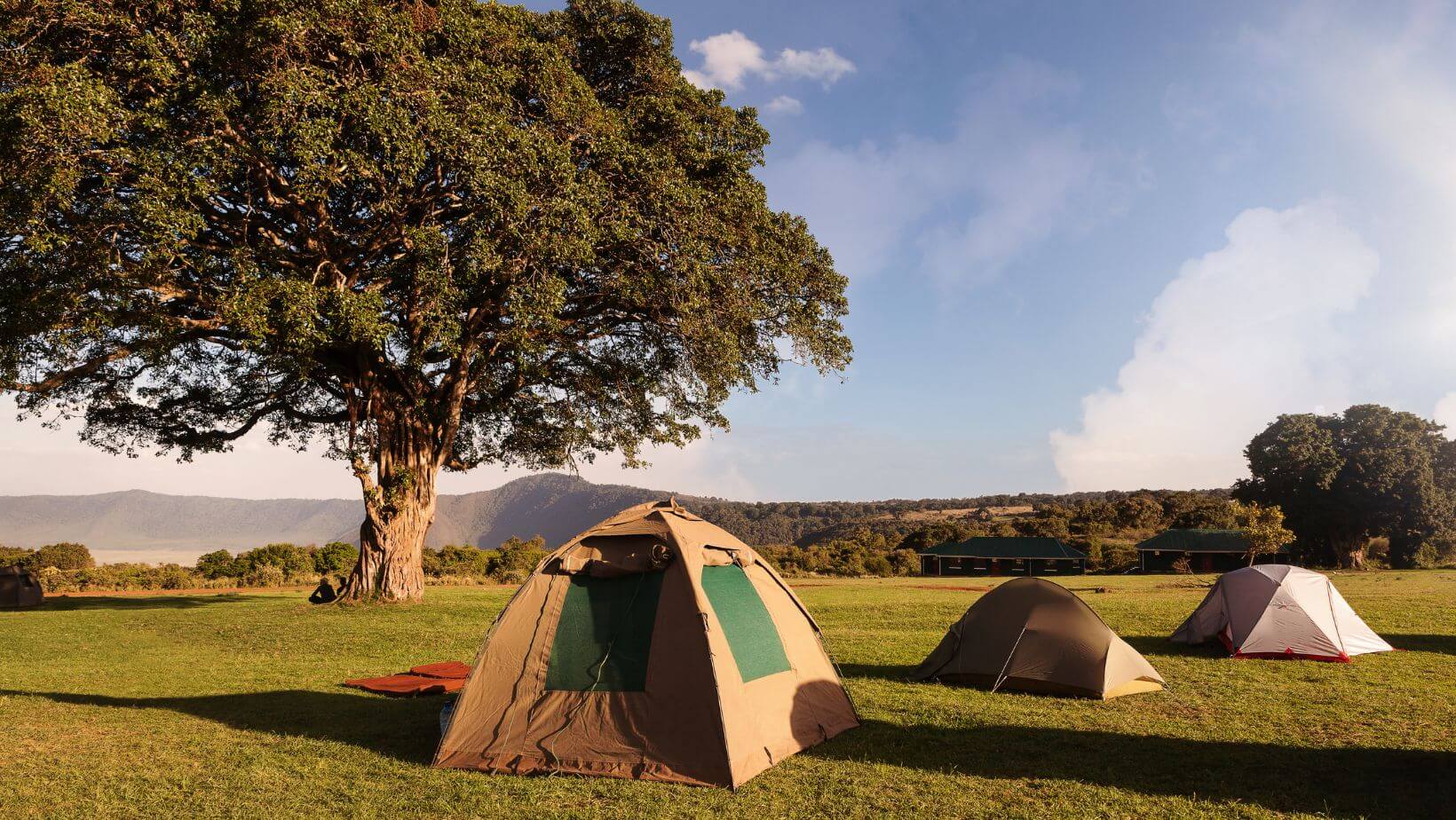
Recommended Camping Sites in Tanzania’s Northern Circuit
When planning a camping adventure in Tanzania’s Northern Circuit, you’ll find several remarkable spots that cater to nature lovers and thrill-seekers alike. Here’s a guide to help you choose the perfect campsite for your journey:
Lake Manyara Area: Migombani Campsite: Elevated in the scenic Rift Valley, this campsite offers stunning vistas and proximity to the serene Lake Manyara, making it a favorite among camping enthusiasts.
Ngorongoro Crater: Simba Campsite: Nestled on the rim of the Ngorongoro Crater, this campsite boasts breathtaking views and an unforgettable setting. It’s a must-visit for those eager to explore this UNESCO World Heritage site.
Tarangire National Park: Tarangire Camp: Experience the magic of camping amidst the giant baobab trees. Wildlife frequently roams here, providing a unique experience for nature lovers and photographers alike.
Serengeti National Park: For those heading to the iconic Serengeti, multiple camping options promise an unforgettable stay, Seronera Public Campsite, Angaata Seronera Camp, Centrally located, it provides easy access to diverse wildlife and the famous migration routes. Ikoma Gate Campsite: Known for its strategic location, it offers both adventure and tranquility. Ngiri and Pimbi Campsites: Both provide a rustic and immersive experience, ideal for those seeking a deeper connection with nature.
Looking for some unforgettable beach camping experiences in Tanzania? Here’s a glimpse of what awaits:
- Tanga’s Palm Oasis: Immerse yourself in a secluded retreat nestled among swaying palm trees. This spot in Tanga is perfect for those seeking both relaxation and adventure amidst breathtaking natural beauty.
- Bagamoyo’s Adventure Hub: For thrill-seekers, head to a campsite in Bagamoyo. Known for its lively atmosphere, it’s the ideal place for those looking to blend adventure with a beachside setting.
- Saadani’s Coastal Gem: Experience the rare delight of camping within a national park right by the beach. In Saadani National Park, your campsite offers a unique mix of wildlife viewing and seaside relaxation, making it a must-visit for nature enthusiasts.
Top Camping Sites in Tanzania’s Southern Circuit
When exploring the remote wilderness of Tanzania’s Southern Circuit, you’ll encounter some extraordinary camping options that promise an unforgettable experience. This region, known for its off-the-beaten-path allure, includes landmarks like Selous Game Reserve and Ruaha National Park, often best accessed by flight due to their seclusion.
Some of the most recommended camping sites in this area include:
- Ruaha Public Campsite No. 1 & 2: Nestled within Ruaha National Park, these public Campsite offer a Good Experience in the heart of nature with view that overlook scenic riverbanks.
- River Valley Campsite: Positioned like an oasis along the tranquil Little Ruaha River, this spot provides a perfect blend of serenity and natural beauty.
- Kumbu Kumbu Riverside Camp: Located in the Selous Game Reserve, these campsites provide an intimate setting along the stunning Rufiji River, offering a close connection with nature.
- Simbamwenni Lodge and Campsite: Situated just outside Morogoro, these campsites serve as a perfect stopover for adventurers passing through the Southern Circuit, providing comfort and accessibility.
Budget-Friendly Accommodation Options Near Tanzania’s National Parks
If you’re planning a trip to Tanzania and want to explore its breathtaking national parks without breaking the bank, here are some excellent and affordable accommodation options you can consider:
Understanding Foreign Currency in Tanzania
Planning your Tanzanian adventure? Let’s dive into the essentials regarding currency and spending money to ensure a smooth journey.
Currency Overview: In Tanzania, the Tanzanian Shilling (TSh) is the official currency. It’s important to note that this is a closed currency. You won’t be able to get it before entering the country, so plan to exchange your money upon arrival.
Exchanging Foreign Currencies: Once in Tanzania, you can easily exchange widely accepted currencies such as:
- US Dollars
- Euros
- British Pounds (GBP)
These are particularly convenient for transferring your money into Tanzanian Shillings upon arrival.
Using US Dollars: While the Shilling is the local currency, US Dollars are often accepted, especially for major expenses like accommodation. However, it’s beneficial to have some Shillings on hand for smaller purchases like meals and drinks.
Tips for Tipping: Consider setting aside a daily budget for tips, as it is customary to tip safari guides. Expect to add around $10 to $25 USD per day for tipping guides after your unforgettable safari experiences.
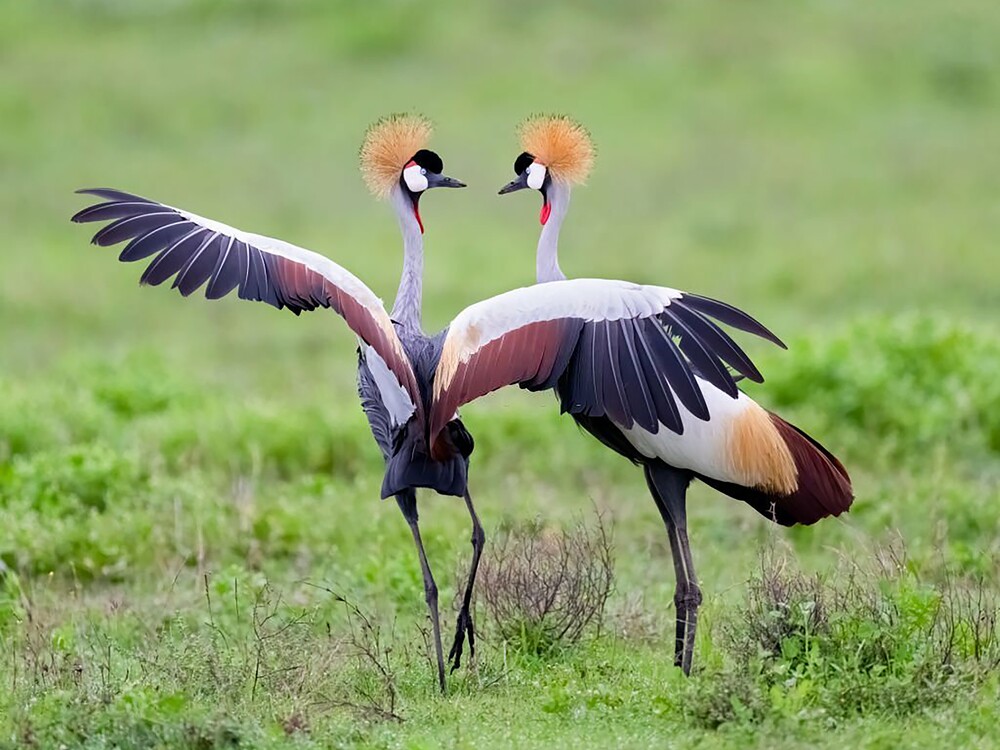
What Are the Visa Costs for Visiting Tanzania?
If you’re planning a trip to Tanzania, understanding the visa requirements and associated costs is crucial. The price you’ll pay for a visa can depend significantly on your nationality.
- For most nationalities, the fee for a single-entry visa is approximately $50 USD.
- However, U.S. citizens will need to spend $100 USD for the same single-entry visa.
Before you proceed with your application, it’s essential to check whether you actually need a visa. Some nationalities enjoy visa-free entry into Tanzania, so verify this based on your country of origin to avoid unnecessary expenses. Visit Tanzania Immigration Department website
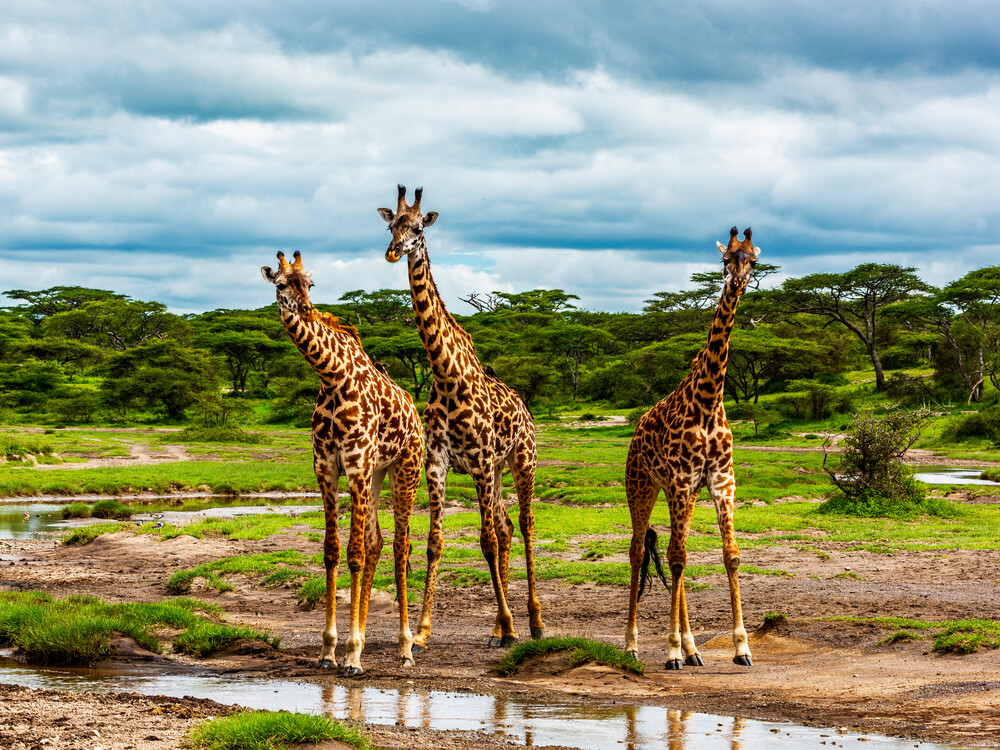
Tips for Planning a Tanzania Budget Safari
Book in Advance: To secure the best prices and availability, it is recommended to book your budget safari in Tanzania well in advance of your travel dates.
Travel in Shoulder Seasons: Consider traveling during the shoulder seasons (March to May and October to November) to take advantage of lower prices and fewer crowds.”
To truly maximize your budget while experiencing the breathtaking beauty of Tanzania, timing is everything. Here’s a breakdown of the best times to go on safari for those looking to save:
Early December: The first two weeks of December are a hidden gem for budget travelers. With tourist volumes low, you can find excellent deals and special off-peak rates. The landscape is lush and vibrant following the November rains, setting the perfect backdrop for your safari. Plan your excursions around the occasional afternoon showers for the best experience.
Low Season (March-April): Known as the ‘long-rains’ season, March and April offer dramatically reduced prices. While you may encounter hot, humid conditions and afternoon showers, the reward is a more intimate safari experience. The dispersed crowds mean you can enjoy thrilling wildlife sightings almost to yourself.
Shoulder Season (January-February): Often overlooked, the shoulder season from January through February provides a unique opportunity. Enjoy a dry spell, lush green plains, and fewer visitors. This period coincides with the Wildebeest calving season in the Serengeti, offering a special glimpse into the circle of life in the wild.
Pack Wisely: Be sure to pack essentials such as comfortable clothing, sturdy hiking boots, and a good camera to capture the incredible wildlife and landscapes of Tanzania. Read more Tanzania safari packing list
Exploring Food Costs in Tanzania: When planning a budget safari in Tanzania, balancing costs while enjoying the local cuisine can be surprisingly affordable. A typical meal from a street vendor or a modest restaurant costs between US$1 to US$3. These meals are often flavorful and a fraction of the price of Western alternatives.
Restaurants and hotels catering to tourists frequently offer Western-style meals. However, these come at a steeper price. Dining in these establishments can range from US$15 to US$20 per person for a standard meal. If you’re mindful of your budget, indulging in local fare is both economical and enriching.
Overall, while budget safaris may not offer the same level of luxury safaris and comfort as high-end safaris, they still provide an immersive and unforgettable wildlife experience in Tanzania.

